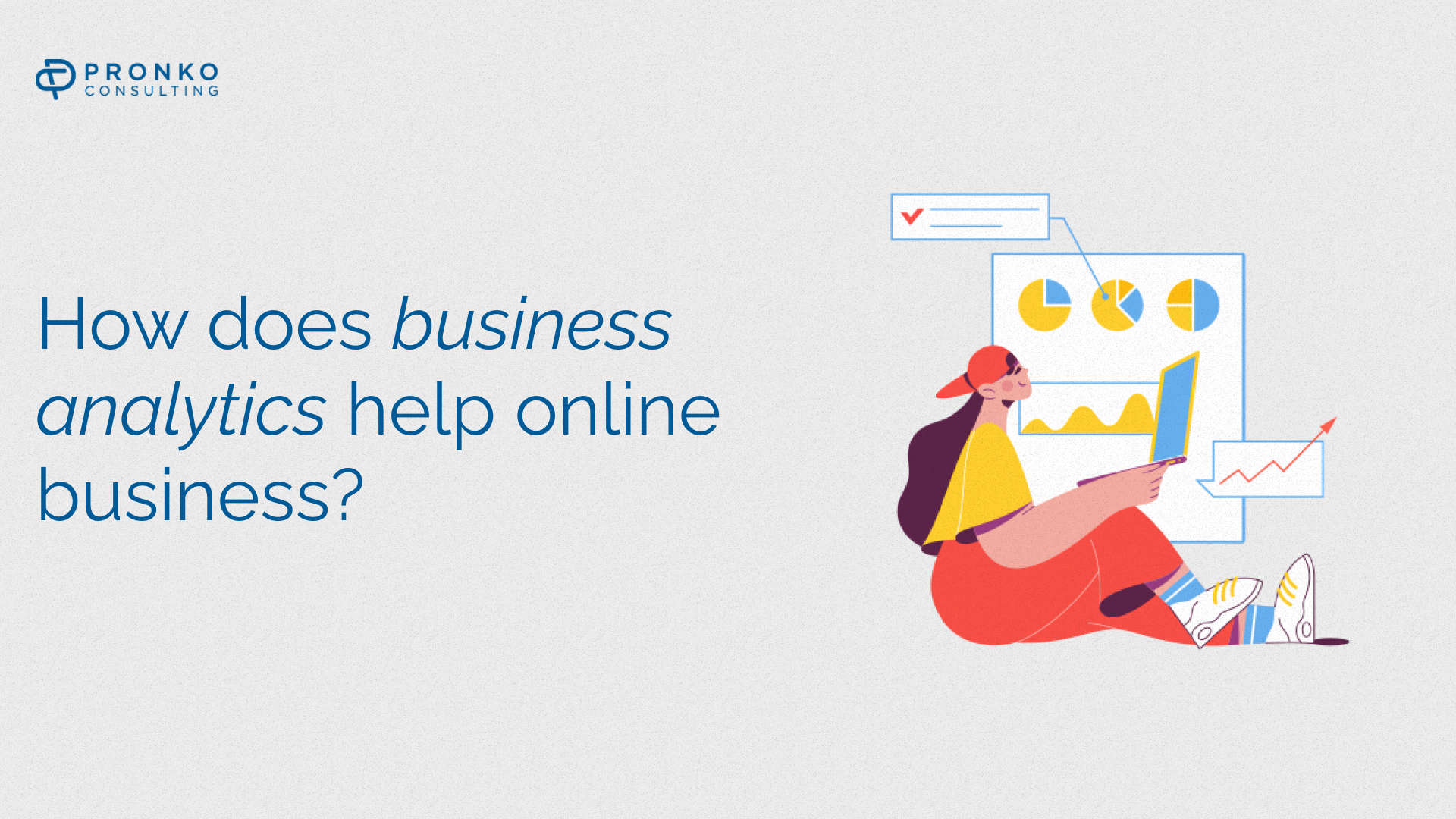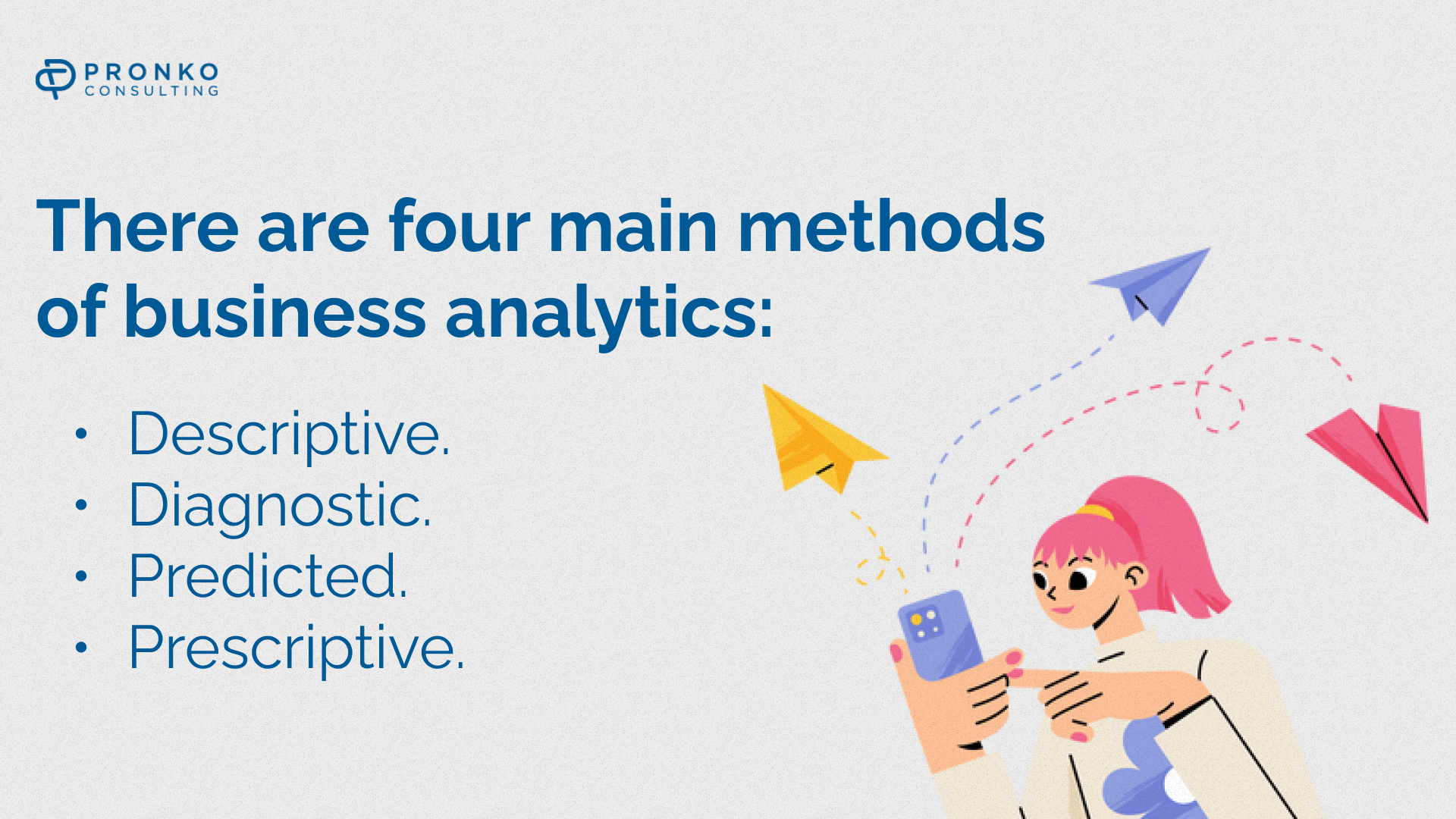Business analytics is a must-have for the development of a modern company

A large amount of constantly growing data has forced companies to think about how they can receive, process, and analyze this information, make forward-looking decisions, and formulate adequate development strategies. Business analytics has become such an effective tool for data processing.
What are the methods of analysis, what advantages does business analytics provide to the company, and what services exist for working with data - further in the article.
Knowledge of the basics and tools of business analytics (BA) can contribute to the faster development of the company. Thus, in a report from the MicroStrategy company, 56% of respondents noted that thanks to business analytics, their company makes decisions much faster, 64% - noticed higher productivity, 51% - recorded better financial results, and 46% - began to create relevant products and services and receive more revenues, 46% — attract and retain customers better, 43% — with BA strengthened their competitive advantages. Given these indicators, let's analyze the topic in more detail so that every Ukrainian company can apply business analytics in its work.
What is business analytics?
Business analytics is a set of processes and tools that help analyze corporate data to assess key performance indicators and extract valuable information about the company's operations. Thanks to this data, the company can make a more informed decision in achieving the business goal.
At the same time, it is essential to distinguish BA from data science. These two concepts are sometimes confused because they are both related to data. However, the difference is that thanks to BA, it is possible to obtain the necessary information and visualize the data to facilitate the decision-making process of company managers. At the same time, Data Science specialists create tools for working with raw data and develop programs, ML-algorithms to automate the collection and processing of information. That is, data in business analytics is a means to decision-making, and data in Data Science is the end goal.
Learn more: How to seek and insights?

Descriptive analytics is the simplest method and the foundation on which other forms are built. It allows you to describe what happened before briefly or is happening now and answers the question, "What happened?". After analyzing the data, the company may find that the sales growth of one of the products depends on the season. For example, descriptive analytics will show that game console sales increase in September, November, and December each year. Data visualization is a classic approach to descriptive analysis because charts, graphs, and maps can clearly and comprehensibly show data trends and dynamics.
Diagnostic analytics extend the analysis to include a comparison of parallel trends, identification of cause and effect relationships, and answer the following logical question: "Why did this happen?". Yes, you can research the demographics of game console users and find that they tend to be between the ages of 8 and 18. However, people between the ages of 35 and 55 buy the product. Analysis of customer survey results will show that their primary motive for buying a console is to give it to their children. The spike in sales in the fall and winter can be attributed to the holidays involving gifts.
Predictive analytics is used to predict future trends or events and answers the question: "What might happen in the future?". You can make informed predictions about the company by analyzing historical data in combination with industry trends. For example, knowing that sales of game consoles have increased significantly in September, November, and December each year for the past few years suggests that the same trend will occur next year. Forecasting the future can help your organization formulate strategies based on likely scenarios.
Prescriptive analytics considers all possible factors of the scenario and offers actionable conclusions. This type of analytics can be beneficial when making data-driven decisions and answering the question, "What should we do next?". Continuing with the video game example, what should the team address, given the projected trend toward seasonality? You may need to A/B test your ad campaign on two factors: one for the end users of the product (kids) and one for customers (their parents). Data from this test can inform how best to exploit seasonality and its predicted cause. During a shopping spree, marketing efforts may need to be expanded with pre-holiday SMS messages, email newsletters, and other promotional tools to increase sales.
Learn more: How to define the demand for a product service?
How else is business analytics used?
Marketers can track the results of advertising campaigns, such as open email rates, link clicks, and conversions on landing pages, and then adjust promotions for greater effectiveness. In particular, financial companies consolidate data and track the movement of funds, expenses, income, etc. Thanks to BA, specialists can monitor profitability in real-time and decide how to increase revenues. And HR can use BA to monitor attendance, productivity, turnover, and team engagement. Thanks to this, make balanced decisions about hiring employees, determine training needs, optimize the work schedule, etc.
Company opportunities thanks to business analytics
- It is reasonable to make an important strategic decision based on facts.
It's interesting that Uber, after updating its Customer Obsession Ticket Assistant, used business analytics to test the performance of the new product compared to the original version. So, by comparing the results of two different options (A/B testing), the company determined that the updated product improved service speed and customer satisfaction indicators. These findings simplified Uber'sUber's ticketing process and saved the company millions of dollars.
2. Increase the company's income.
Businesses that invest in data analytics have an average profit of 6% higher than those that do not. In addition, within five years, it can increase to 9%, and costs can decrease by 10%. These findings illustrate the clear financial benefits a sound strategy based on business analysis can bring.
3. Improve the efficiency of business processes.
Companies use predictive analytics to predict equipment maintenance and operational issues before they happen. Thus, thanks to the use of BA, one telecom operator predicts failures seven days before their occurrence. Armed with this information, the organization plans technical work more effectively. It allows not only to save on operating costs but also to maintain the condition of the equipment at the optimal level of productivity.
A tool for data consolidation and analysis
Business analytics has been around for over 30 years. Initially, this was done by IT specialists. When the enterprise requested analytics, managers went to the IT department and received answers in statistical reports. If new questions arose, it was necessary to communicate with IT again. In today's world, there are ready-made systems for business analysis that are so interactive and understandable that you can independently work with data, configure dashboards, create reports, and share results with colleagues - all this without the involvement of IT specialists. Businesses often use cloud-based BA tools that connect to many company data sources and are available in real-time. Modern platforms make business analytics accessible not only to professional analysts but also to ordinary users.
BA tools are also timely because there is currently a shortage of qualified business analysts. Harvard Business School professor Ian Hammond points out that many analysts can find the necessary indicators. Still, beyond that, specialists must know how to interpret the numbers in the context of business strategy. Due to the popularization of business analytics, according to forecasts, from 2020 to 2030, the number of qualified professionals may increase by 25%, which is much faster than the average for all other professions.
You can combine and consolidate information from the following sources: Excel, YouTube, Google Ads, Facebook Ads, ERP systems (Enterprise Resource Planning), CRM systems (Dynamics, Terrasoft CRM, etc.), Google Big Query, SAP HANA, any messengers, bots, etc.
Ian Hammond argues that companies still not using business intelligence will eventually fall behind their industry peers. Instead, understanding the importance of data analysis gives companies value and opportunities to influence market sentiment. You can improve productivity, increase sales and enhance the customer experience.
